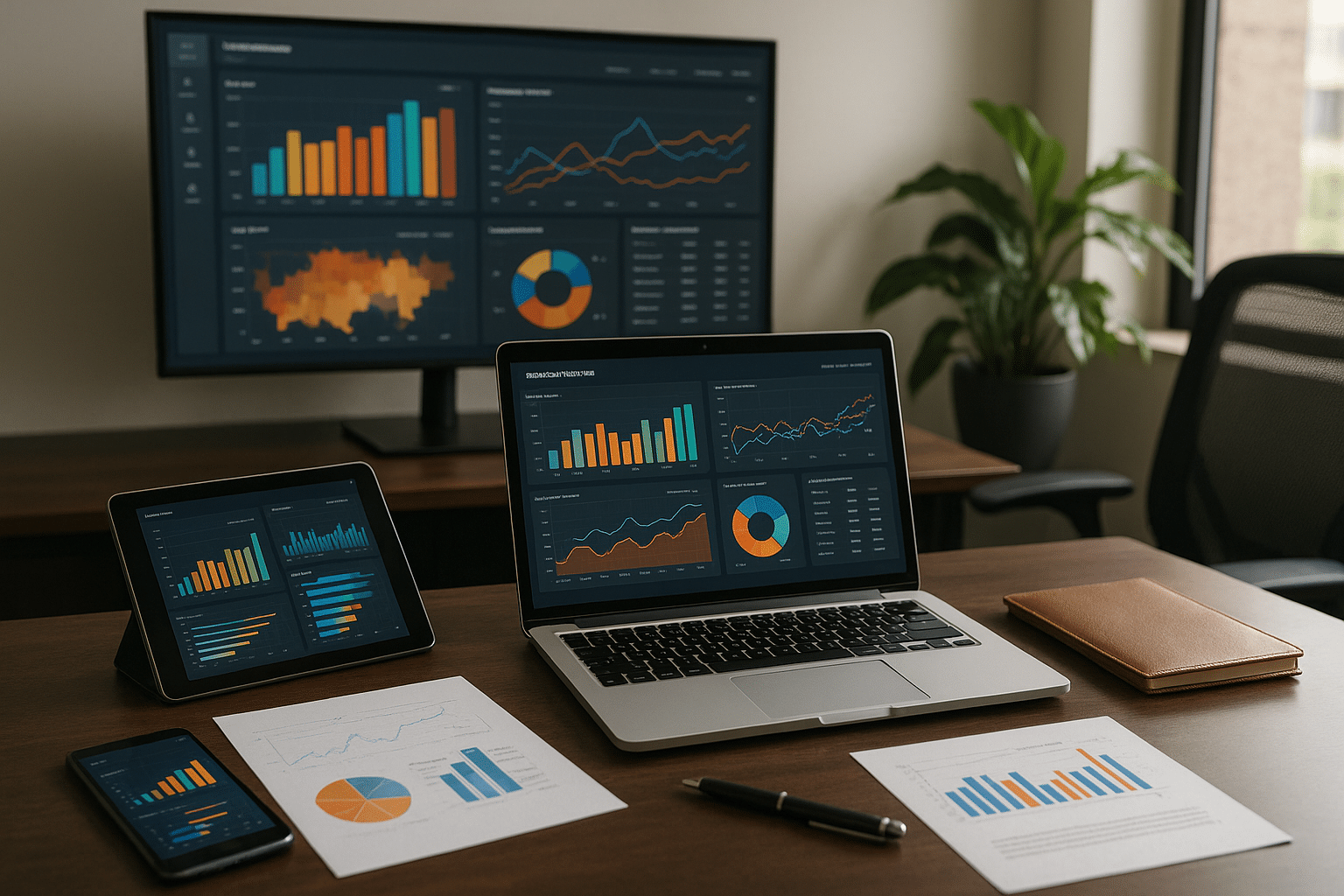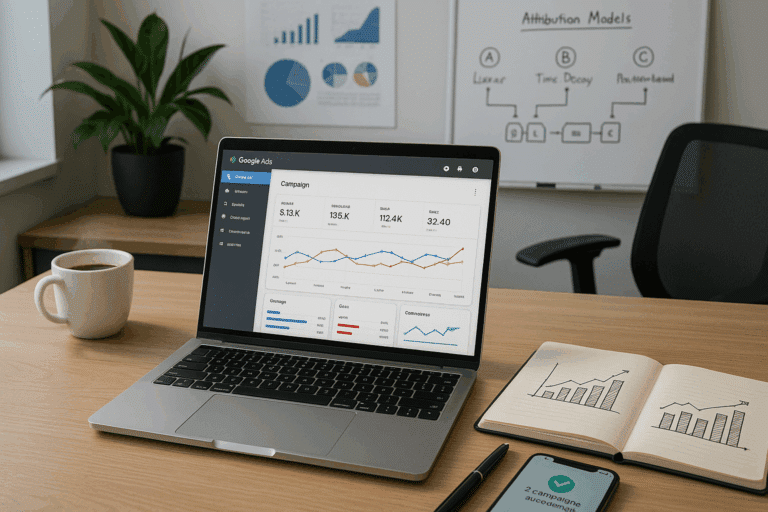Today’s adventure will unfold the layers of mastering visual attribution in dynamic dashboards and its crucial role in data-driven decision making. If you’re a data enthusiast, a business leader, or simply someone seeking to understand the enigma of data visualization, then you’re in the right place.
Does the term ‘Visual Attribution’ bewilder you? Well, don’t worry. By the end of this post, it will become as familiar as your favorite book or movie. In its simplest form, visual attribution is the visual representation of data that allows us to gain valuable insights and aids in making informed decisions.
🔍 Why is Visual Attribution in Dynamic Dashboards essential?
Imagine you’re presented with rows upon rows of raw data. Even with a background in data analysis, it would be challenging and time-consuming to extract any meaningful information. Now, imagine that data presented visually, with patterns, trends, and outliers clearly marked. Much better, right? That’s the power of visual attribution in dynamic dashboards. It’s a powerful tool that allows us to understand complex data and harness its power to make effective decisions.
⚙️ How does it work?
Visual attribution in dynamic dashboards uses graphs, charts, and other visual elements to represent data. These visual elements act as a translator, converting raw data into a language we can understand and use. By mastering visual attribution, you’re essentially learning a new language that empowers you to unlock the full potential of your data.
💡 What will this article cover?
This comprehensive guide aims to navigate you through the labyrinth of visual attribution in dynamic dashboards. We will break down its key components, explore its practical applications, and discuss best practices for effective data visualization.
We will begin by dissecting the concept of dynamic dashboards and understanding why they have become an essential tool in the modern business landscape. We will then delve into the importance of visual attribution and how it serves as the lifeblood of a dynamic dashboard.
Following this, we will discuss the different types of visual attributions and when to use each one. From bar graphs to heat maps, each visual attribution serves a unique purpose, and we’ll explore how you can choose the right one to suit your needs.
Finally, we will discuss how mastering visual attribution in dynamic dashboards can empower you to make data-driven decisions. In a world where data has become the new oil, this skill is not just an asset but a necessity.
So, are you ready to embark on this fascinating journey? Let’s dive in and unlock the secrets to mastering visual attribution in dynamic dashboards!
Decoding Success: Mastering Visual Attribution in Dynamic Dashboards
In this era of Big Data, every business decision is being driven by data analysis. The ability to interpret and leverage data is now a fundamental requirement for successful business operations. This makes understanding the visual attribution in dynamic dashboards a critical skill. But what exactly is visual attribution and why is it so important? Let’s delve into this intriguing world of data visualization.
Visual attribution in dynamic dashboards refers to the ability to accurately represent data visually. This could be through graphs, charts, heat maps, or any other visualization tool that helps in understanding data patterns, trends, and relationships. The aim is to present data in a way that’s easy to understand and enables informed decision making.
Mastering visual attribution isn’t merely about understanding how to create attractive graphs or charts. It’s about learning how to use data visualization to narrate a story, highlight significant data points and reveal insights that might otherwise remain hidden. In other words, visual attribution is the art and science of transforming raw, complex data into insightful visual narratives.
Why Visual Attribution Matters
If you’re still wondering why visual attribution is so important, let’s put it into perspective. Human beings are visual creatures. We process visual information far more effectively than any other form of data. In fact, the human brain processes images 60,000 times faster than text! This is why data visualization is such a powerful tool. It simplifies complex data and presents it in a way that’s easy to comprehend and act upon.
In the context of dynamic dashboards, visual attribution aids in data-driven decision making. Dashboards provide a snapshot of key data points, metrics, and trends in real-time, facilitating quick and informed decisions. With visual attribution, these dashboards become even more effective, providing clear, actionable insights at a glance.
Visual attribution is also crucial in identifying patterns and trends in data. With the sheer volume of data that businesses deal with today, spotting these patterns manually would be like finding a needle in a haystack. Visual attribution helps to highlight these patterns, making it easier to identify trends and make predictions.
Strategies for Mastering Visual Attribution
So, how can you master visual attribution? Here are some strategies to get you started:
- Understand your data: Before you can visually represent your data, you need to understand it. This includes knowing what each data point represents, the relationships between different data points, and the overall narrative that your data is telling.
- Choose the right visualization tool: Different data sets require different visualization tools. For instance, bar graphs are great for comparing data, while heat maps are useful for showing relationships between different data points. Choose the tool that best represents your data.
- Keep it simple: The purpose of data visualization is to simplify complex data. Avoid cluttering your visuals with unnecessary information. Keep it clean and focused on the key data points.
For a more comprehensive guide on mastering visual attribution, I recommend watching this insightful YouTube video titled “The Art of Data Visualization” by PBS Digital Studios. It provides a deep dive into the techniques and strategies for effective data visualization.
Comparative Analysis of Data Visualization Tools
Now that we’ve covered the importance of visual attribution and some strategies for mastering it, let’s take a look at some of the popular data visualization tools available in the market.
| Tool | Pros | Cons |
|---|---|---|
| Tableau | Intuitive interface, wide range of visualization options, strong community support | Expensive, steep learning curve for advanced features |
| Power BI | Seamless integration with Microsoft products, lower cost | Less flexible in terms of visualization options compared to Tableau |
| QlikView | Strong data processing capabilities, robust analytics | Less user-friendly interface, higher cost |
Choosing the right tool depends on your specific needs and resources. I recommend trying out different tools and seeing which one works best for you. Remember, mastering visual attribution is not about being proficient in a particular tool. It’s about understanding your data and knowing how to present it in a way that’s easy to understand and actionable.
Wrapping Up
Mastering visual attribution in dynamic dashboards is no longer a nice-to-have skill; it’s a must-have. In our data-driven world, the ability to interpret and visualize data is crucial for informed decision-making. So, whether you’re a business owner, a data analyst, or simply someone interested in data visualization, honing your skills in visual attribution will undoubtedly prove beneficial.
So, what are you waiting for? Dive into your data, experiment with different visualization tools, and start telling compelling data stories. If you need some inspiration, check out the video I mentioned earlier, “The Art of Data Visualization” by PBS Digital Studios. It’s a great resource to get you started on your data visualization journey.
Remember, data is only as valuable as the insights you can extract from it. So, master visual attribution and unlock the true potential of your data. Happy data visualizing!

Conclusion
In the realm of this discourse, we have journeyed through the labyrinth of complex topics surrounding the significance of agile development methodologies, cloud computing, and the interplay between Information Technology and Engineering. I hope that this expedition has been enlightening and instrumental in enhancing your comprehension of these technical concepts, as our goal has been to make these complex notions accessible to everyone. 🧐📘
Let’s take a step back and retrace our steps, consolidating the key points that have been illuminated. We began with a deep dive into Agile methodologies, emphasizing its importance in enhancing software development processes. We examined its principles and values, discussing how it promotes adaptability, continuous improvement, and customer collaboration.
Our journey then took us to the realm of cloud computing. We dissected its fundamental concepts, looked at its diverse service models, and explored its multiple deployment strategies. We also touched on the security concerns associated with cloud computing, outlining strategies to mitigate these risks.
Furthermore, we delved into the intricate relationship between Information Technology and Engineering, examining how they work in tandem to create cutting-edge solutions and drive technological innovation. We also highlighted the need for a strong foundation in both disciplines for a more holistic approach to problem-solving in the tech industry. 💻🔧
The significance of these topics cannot be overstated. They form the backbone of our current digital ecosystem and will continue to shape the future of technology. Whether you’re a software engineer, IT professional, or someone with an interest in technology, understanding these concepts is crucial. It not only enhances your knowledge but also empowers you to contribute effectively to this ever-evolving landscape.
Your engagement is highly valued, and I encourage you to express your thoughts, opinions, or inquiries in the comment section. Sharing this article with your network will not only spread knowledge but may also stimulate insightful discussions.
If you’re interested in further expanding your understanding, you may find these resources beneficial:
– [The Manifesto for Agile Software Development](http://agilemanifesto.org/)
– [The National Institute of Standards and Technology’s Definition of Cloud Computing](https://nvlpubs.nist.gov/nistpubs/Legacy/SP/nistspecialpublication800-145.pdf)
It’s a fascinating journey, and the more we learn, the more we realize there is to discover. So keep questioning, keep exploring, and keep pushing the boundaries of your understanding. After all, it is our insatiable curiosity that propels us forward in this ever-evolving digital landscape. Remember, every question brings us one step closer to the answer. So, don’t stop asking, keep learning, and stay curious! 🚀🌍
Disclaimer: Please note that all views expressed in this article are my own and do not represent the opinions of any entity whatsoever with which I have been, am now, or will be affiliated.
[instagram-feed]



